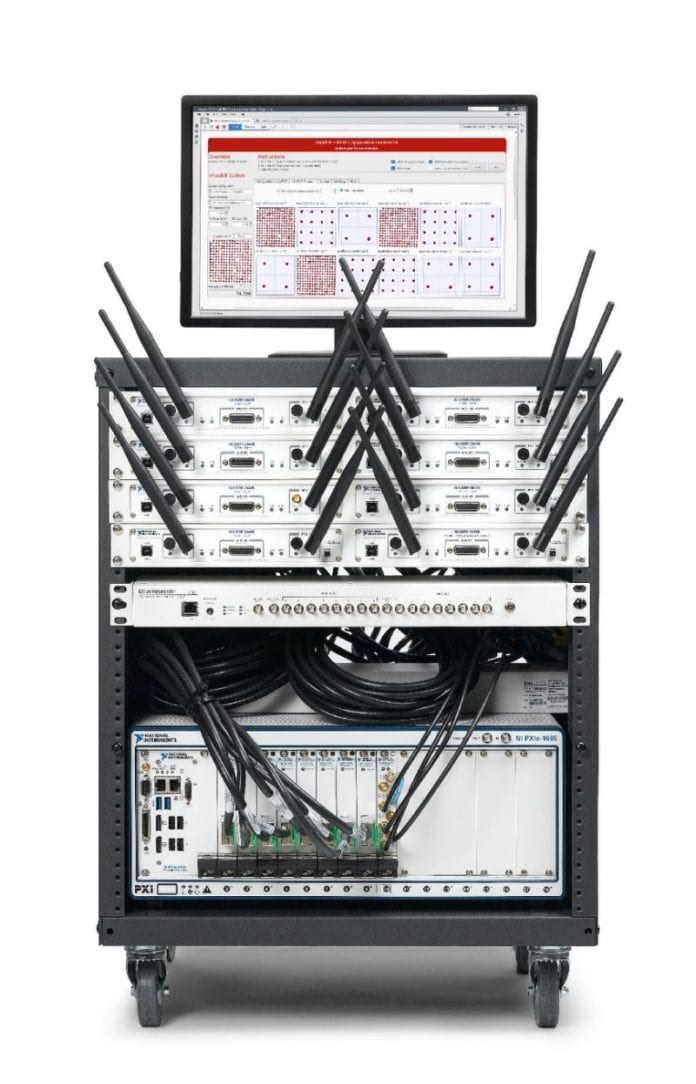Tests show record increase in data throughput
As mobile network operators explore ways to get more bandwidth from their limited spectrum, multiple-input-multiple-output antennas are among the most promising solutions. National Instruments said this week that it has created a unique solution to enable wireless researchers to build massive MIMO prototypes. The Texas company said its platform scales from 4 to 128 antennas, and has helped researchers achieve a 22-fold increase in spectral efficiency compared to 4G networks.
Researchers at the University of Bristol have used National Instrument’s platform in partnership with researchers at Lund University. The team said the test successfully transmitted 20-times as much data as LTE networks could deliver with the same amount of spectrum.
“At the time we were doing it, we probably didn’t quite realize what we’d achieved,” said Mark Beach, professor of radio systems engineering at the University of Bristol. “It was really only the day after that we realized that was a record.”
“We were able to prove the potential of massive MIMO as a candidate technology for ‘5G’ by setting world records in spectral efficiency,” said Andrew Nix, dean of engineering at the University of Bristol. “The MIMO application framework National Instruments provided allowed our team to begin our work from an advanced starting point, and the seamless interaction between the software and hardware let us move quickly from theory to real-world prototyping.”
National Instruments said the MIMO application framework is a software reference design that can be paired with the company’s software-defined radio hardware to provide a physical layer written and delivered in the company’s LabVIEW source code and used to build massive MIMO prototypes.
What is massive MIMO?
MIMO stands for multiple-input-multiple-output, meaning that within the same channel data travels from multiple transmission points to multiple receive points. To understand massive MIMO, imagine ordering a hamburger at a restaurant and seeing the server wait for your order at a counter, while a cook flips patties and toasts buns on the other side. One way to speed up the process and serve more people is to add more cooks behind the counter, and to have several employees assemble your meal – bun, meat, veggies, condiments, fries and a drink – with your food server delivering it all to you. Massive MIMO is the same idea – the antennas on cell towers will have more ports and be able to send more data streams, and smartphones will need more antenna ports to collect the data streams. The smartphone modem is like the food server that assembles everything into one package for the end user.
Carriers aren’t likely to add more antennas to towers until smartphones have enough antenna ports on the receive end. Right now most high-end smartphones support 2×2 MIMO. The next step is 4×4 MIMO, which is already supported by Qualcomm’s X12 modem.
But even 4X4 MIMO doesn’t qualify as “massive.” The term massive MIMO is thought to have originated with Tom Marzetta of Bell Labs, and is often understood to denote at least 16 antennas on both the transmit and the receive end.
Follow me on Twitter.

